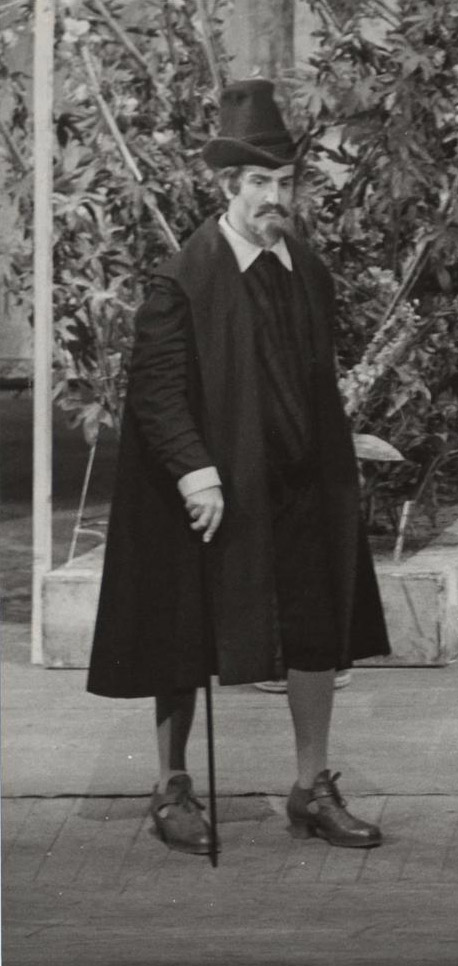Antonio Pirino
 Dottor Cajus, La Fenice 1965
Dottor Cajus, La Fenice 1965
In RA format
In RA format
Antonio Pirino is a fad among some collectors, who are convinced he was a marvel of Italian tenor
chant. He came from Sardinia, and was born in 1919. (I don't know when he died, but in November 2003, he was still alive, as he was
interviewed on the Italian radio.) From the 1940s to 1970s, he sang at the major Italian houses: at La Scala, at La Fenice, and
above all in Rome, both at the opera theater and the Terme di Caracalla. He was kind of famous for his Ruodi (Pescatore) in Guillaume
Tell; otherwise, however, he sang mostly not even small but tiny roles, and often served as the second cast for them: Venditore di
canzoni (Il tabarro), Normanno, Ruiz, Gastone, Mastro Trabuco, Borsa, Abdallo, both Vierter and Fünfter Jude (Salome), Spoletta,
Altoum, Monostatos, plus lots of roles in contemporary works; but also Don Basilio (Nozze di Figaro), Incredibile or Beppe. For such
a repertory, he may have been adequate, though I find his voice production neither easy nor easy on the ears.
The reason for the excitement of those collectors is that he had an unusually secure top, and could sing high Fs on demand, which he
obviously liked to do in private. Thanks to that ability, he occasionally jumped in for sick famous colleagues in main roles, like at
the Rome opera theater on 11 May 1952 as Arturo in I puritani (the sick colleague was Giacomo Lauri-Volpi), where of course he could
display his F. There is a home recording of Credeasi, misera by Pirino, or rather of snippets from that scene, where he is
almost constantly off-tune, but then sings a brilliant, easy F that has actually hardly any equal; that recording, accompanied by a
miserable pianist on a miserable piano, has often been thought to be sung by Lauri-Volpi – perhaps because Lauri-Volpi's
late home recordings are just as miserably accompanied (by himself), or perhaps because of that evening in May 1952 where he
substituted Lauri-Volpi in that role...
Reference 1: Teatro dell'Opera di Roma archives, reference 2: La Scala archives, reference 3 and picture source: Teatro
La Fenice archives, reference 4
I wish to thank Alessandro Sciocchetti and Paolo Cavassini for the recordings.
|
